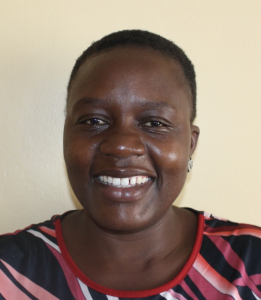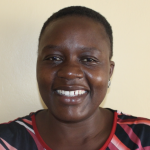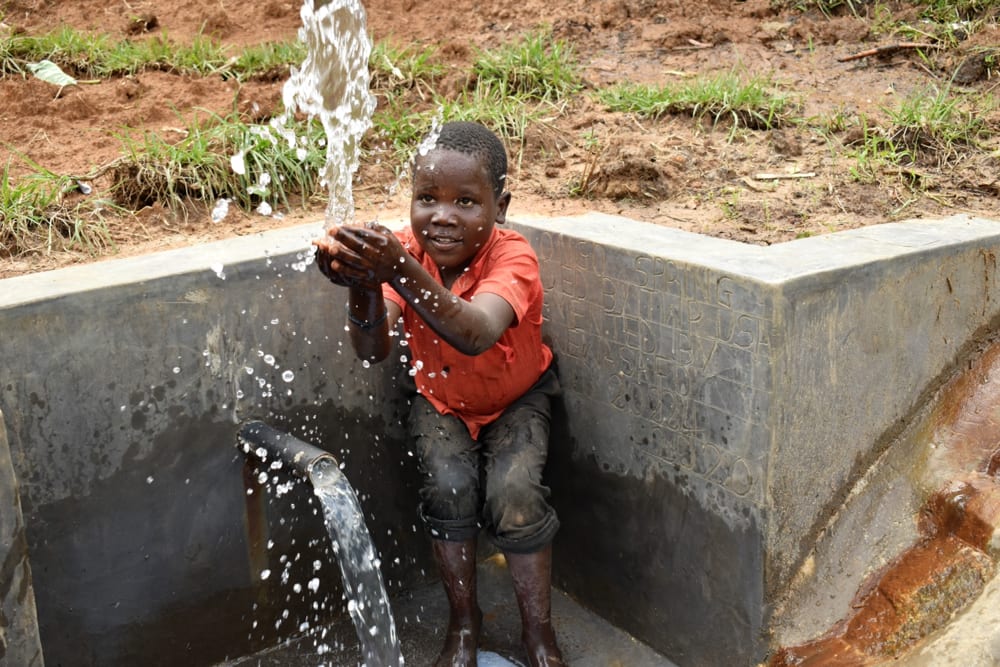"My name is Nelly Mulongo and I've been married in this community for the last 13 years. I am normally overburdened with the task of fetching water each day. The reason being, our water gets contaminated and cloudy after many people have fetched it. This forces me to go as early as 6:00 am to the spring to fetch water because it settles down in the night."
"I am also a business lady and by 6:00 am I need to be at the market to get fresh merchandise at wholesale price. I am forced to miss going to the market to go and get water. Other times, I just go to the market and this leaves me with no option but to use contaminated water that is not safe for my family."
Nelly is just 1 of the 140 people in Mukhungula who depend on water from Mulongo Spring for all of their daily water needs. But the spring is hardly meeting those needs when in its unprotected state, all it produces is contaminated water.
The spring is completely open, leaving it prone to dirty surface runoff when it rains. To fetch water, community members have to completely submerge their containers inside the spring water, adding any dirt or contaminants from the outside of their containers and hands directly to the water. Many people also step inside the spring to get a better position for fetching water, or they slip in by accident. Both put them at risk of contracting bilharzia.
During the rainy season, the area around the spring becomes particularly slippery and risky to traverse. There are also insects and frogs that breed in the water, thus creating a health hazard and danger to the community members consuming it. Community members report cases of diarrhea, stomachaches, and coughs from consuming the spring water, especially amongst children.
The spring water is visually cloudy, so as Nelly mentioned, many people try to fetch it first thing in the morning before more people fetching cause more dirt and sand to mix with the water. But this creates long lines and crowding, which are especially concerning during the pandemic as people are trying to avoid groups and limit their time in public. That time also wastes adults' valuable work and business time and children's time in school. When the water gets really murky, community members try to use a sieve to remove some of the larger pieces of dirt.
"We will be glad if our spring is protected. This is because I have to wake up early to go to the spring each morning. Whenever it's dark I am scared to go...Acccesibility is also a challenge, especially whenever it rains," explained young teenager Sheila.
Mukhungula is a beautiful area composed of farming activities, businesses, and green vegetation. The community is comprised of a mixture of Luhya sub-tribes, including the Kabras, Tachoni, Bukusu, and Banyala. The majority of people here are farmers, growing crops such as maize, sugarcane, and sweet potatoes. Others like Nelly operate their own small businesses. Many of the young men have also ventured into the boda boda (motorbike taxi) business at the local shopping center, ferrying people in and out of this location.
What We Can Do:
Spring Protection
Protecting the spring will help provide access to cleaner and safer water and reduce the time people have to spend to fetch it. Construction will keep surface runoff and other contaminants out of the water. With the community’s high involvement in the process, there should be a good sense of responsibility and ownership for the new clean water source.
Fetching water is a task predominantly carried out by women and young girls. Protecting the spring and offering training and support will, therefore, help empower the female members of the community by freeing up more of their time and energy to engage and invest in income-generating activities and their education.
Training on Health, Hygiene, COVID-19, and More
To hold trainings during the pandemic, we work closely with both community leaders and the local government to approve small groups to attend training. We ask community leaders to invite a select yet representative group of people to attend training who will then act as ambassadors to the rest of the community to share what they learn. We also communicate our expectations of physical distancing and wearing masks for all who choose to attend.
The training will focus on improved hygiene, health, and sanitation habits in this community. We will also have a dedicated session on COVID-19 symptoms, transmission routes, and prevention best practices.
With the community’s input, we will identify key leverage points where they can alter their practices at the personal, household, and community levels to affect change. This training will help to ensure participants have the knowledge they need about healthy practices and their importance to make the most of their water point as soon as water is flowing.
Our team of facilitators will use a variety of methods to train community members. Some of these methods include participatory hygiene and sanitation transformation, asset-based community development, group discussions, handouts, and demonstrations at the spring.
One of the most important issues we plan to cover is the handling, storage, and treatment of water. Having a clean water source will be extremely helpful, but it is useless if water gets contaminated by the time it is consumed. We and the community strongly believe that all of these components will work together to improve living standards here, which will help to unlock the potential for these community members to live better, healthier lives.
We will then conduct a small series of follow-up trainings before transitioning to our regularly scheduled support visits throughout the year.
Training will result in the formation of a water user committee, elected by their peers, that will oversee the operations and maintenance of the spring. The committee will enforce proper behavior around the spring and delegate tasks that will help preserve the site, such as building a fence and digging proper drainage channels. The fence will keep out destructive animals and unwanted waste, and the drainage will keep the area’s mosquito population at a minimum.
Sanitation Platforms
At the end of the training, participants will select 5 families that should benefit from new concrete latrine floors called sanitation platforms. Training will inform the community and selected families on what they need to contribute to make this project a success. They must mobilize locally available materials, including bricks, clean sand, and gravel.
The 5 families chosen for sanitation platforms must prepare by sinking a pit for the sanitation platforms to be placed over. Our trainers then instruct them on how to build superstructures over their new platforms. These 5 sanitation platforms will serve as examples for the rest of the community to replicate.
All community members must work together to make sure that they continuously provide accommodations and food for the work teams throughout all stages of spring and sanitation platform construction.

 Protected Spring
Protected Spring
 Rehabilitation Project
Rehabilitation Project
















































